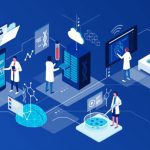
Choosing the Perfect R&D Partner: What Every MedTech Company Should Know
October 28, 2025
Enabling Smarter Healthcare with Vendor-Agnostic Interoperability
October 28, 2025
Choosing the Perfect R&D Partner: What Every MedTech Company Should Know
October 28, 2025
Enabling Smarter Healthcare with Vendor-Agnostic Interoperability
October 28, 2025
From Data to Discovery: Transforming Raw Device Metrics into Actionable Clinical Insights
Step into any ICU or connected ward today and you’ll be met with a sea of numbers. Heart rates blinking on bedside monitors. Ventilator settings ticking away. Infusion pumps calculating precise dosages. Remote monitoring apps streaming continuous updates from patients at home.
Individually, each number matters. But together, they create a flood—one that can leave even the most skilled care team overwhelmed.
The paradox of modern healthcare is this: we have more data than ever, yet insights are often harder to find.
When Data Becomes Noise
Consider a nurse in a high-acuity ward. She checks a patient’s vitals: blood pressure, oxygen saturation, respiratory rate, and more. At the same time, alerts flash from another monitor, a lab result arrives in the EHR, and a physician messages for an update.
The nurse isn’t short on information—she’s drowning in it. What she needs isn’t more numbers. She needs to know: What do these numbers mean right now? Do they signal stability, or early deterioration? Do I need to act now, or continue to monitor?
Without that clarity, data becomes noise. And noise, in healthcare, can be dangerous.
The Cost of Missed Connections
A cardiologist once shared a story: a patient’s heart monitor showed small, irregular changes. At the same time, the patient’s lab values indicated rising risk. But because these streams lived in different systems, no one saw the full picture until the patient deteriorated.
This is not an issue of incompetence—it’s a systems problem. When raw data remains siloed, critical connections are missed. And every missed connection can mean delayed intervention, unnecessary procedures, or longer hospital stays.
From Raw Data to Actionable Insight
The solution isn’t to collect less data—it’s to transform raw data into knowledge. That means:
- Contextualization: Combining device readings with lab results, medications, and clinical history to create a meaningful story.
- Prioritization: Filtering out low-risk alerts while surfacing signals that demand urgent attention.
- Visualization: Presenting complex data in clear, intuitive dashboards so decisions can be made in seconds, not minutes.
- Prediction: Using AI and machine learning to detect early signs of deterioration before they’re visible on the surface.
In practice, this looks like a single patient dashboard that shows not just vitals, but their trajectory: “This patient’s oxygen levels have been trending down for the last three hours, while their respiratory rate is climbing.” Suddenly, the data isn’t just numbers—it’s a narrative.
Real-world Impact
In one connected ICU program, unifying and analyzing device data helped reduce response times to critical events. Instead of reacting to every alarm, staff received prioritized alerts that indicated when a patient’s combined data suggested risk.
The result? Fewer false alarms, less burnout, and—most importantly—earlier intervention for patients in trouble.
Or take remote monitoring. Raw data from wearables may show dozens of readings per day. But when analyzed and presented as trends, it helps clinicians spot worsening heart failure before it requires an emergency admission.
These aren’t hypothetical scenarios—they’re the real dividends of turning data into insight.
Why This Matters for Leaders
For CIOs, CMIOs, and hospital executives, the lesson is clear: investing in more devices is not enough. The true differentiator will be the ability to harness data intelligently.
Hospitals that master this shift won’t just be collecting numbers—they’ll be enabling faster decisions, improving outcomes, and reducing the cognitive load on their staff. That’s what defines a truly “smart” hospital.
Next Steps
👉 Is your organization ready to turn raw numbers into actionable knowledge? Please reach out to iOrbit. Let’s explore how data intelligence can help your teams focus less on chasing information—and more on delivering care.